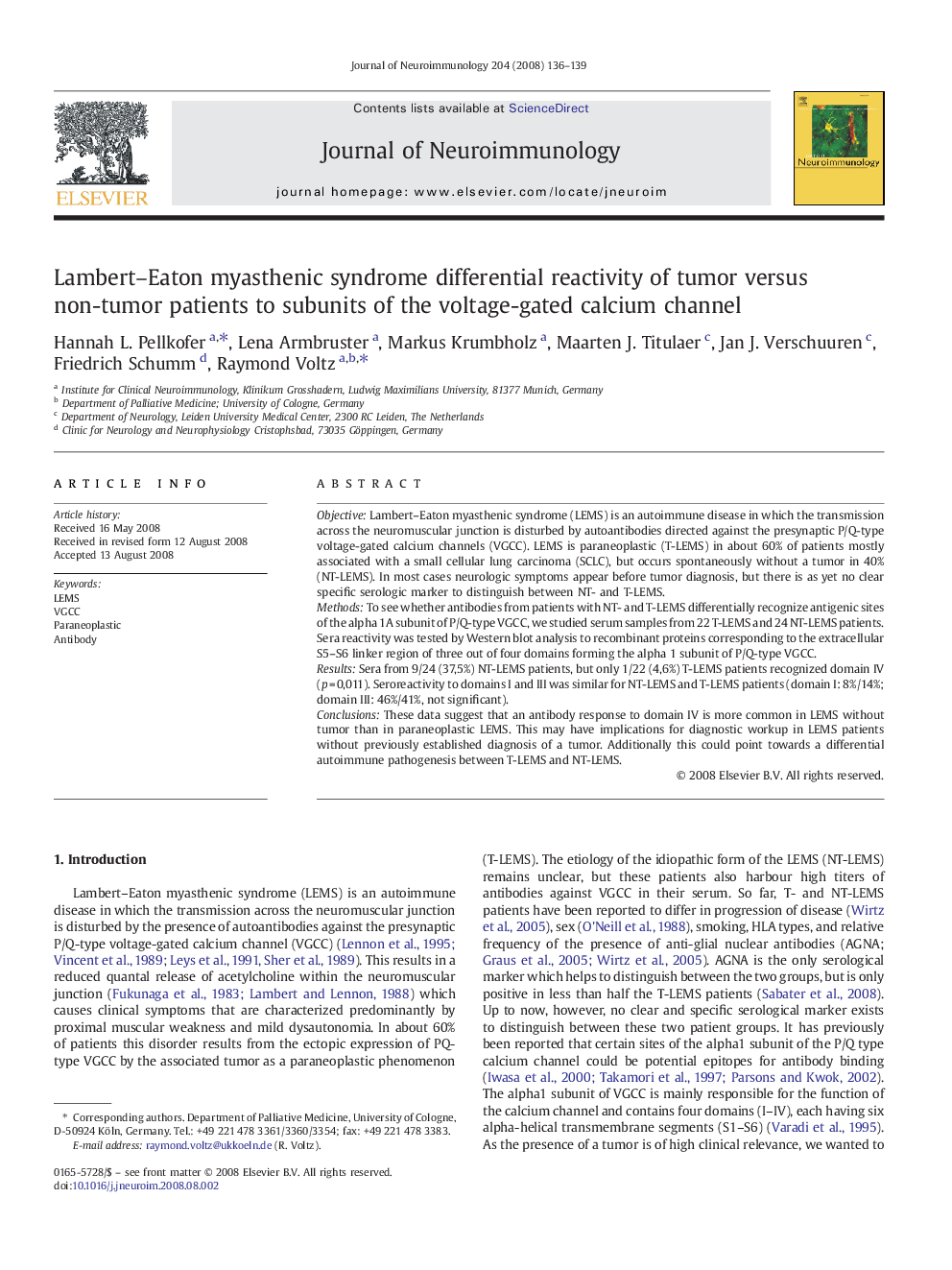| Article ID | Journal | Published Year | Pages | File Type |
|---|---|---|---|---|
| 3064935 | Journal of Neuroimmunology | 2008 | 4 Pages |
ObjectiveLambert–Eaton myasthenic syndrome (LEMS) is an autoimmune disease in which the transmission across the neuromuscular junction is disturbed by autoantibodies directed against the presynaptic P/Q-type voltage-gated calcium channels (VGCC). LEMS is paraneoplastic (T-LEMS) in about 60% of patients mostly associated with a small cellular lung carcinoma (SCLC), but occurs spontaneously without a tumor in 40% (NT-LEMS). In most cases neurologic symptoms appear before tumor diagnosis, but there is as yet no clear specific serologic marker to distinguish between NT- and T-LEMS.MethodsTo see whether antibodies from patients with NT- and T-LEMS differentially recognize antigenic sites of the alpha 1A subunit of P/Q-type VGCC, we studied serum samples from 22 T-LEMS and 24 NT-LEMS patients. Sera reactivity was tested by Western blot analysis to recombinant proteins corresponding to the extracellular S5–S6 linker region of three out of four domains forming the alpha 1 subunit of P/Q-type VGCC.ResultsSera from 9/24 (37,5%) NT-LEMS patients, but only 1/22 (4,6%) T-LEMS patients recognized domain IV (p = 0,011). Seroreactivity to domains I and III was similar for NT-LEMS and T-LEMS patients (domain I: 8%/14%; domain III: 46%/41%, not significant).ConclusionsThese data suggest that an antibody response to domain IV is more common in LEMS without tumor than in paraneoplastic LEMS. This may have implications for diagnostic workup in LEMS patients without previously established diagnosis of a tumor. Additionally this could point towards a differential autoimmune pathogenesis between T-LEMS and NT-LEMS.
